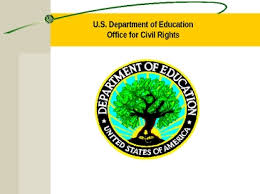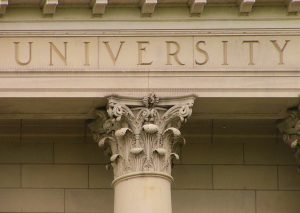 The Fable Children’s fables are often an overlooked source of wisdom. Take for example Aesop’s 17th century fable “The Monkey and the Cat.” As the story goes, a cat and monkey lived in the same house as pets. The monkey, desiring to eat the chestnuts roasting on the family hearth, dupes the cat into retrieving them by flattering the cat’s greater skill in such matters. The problem for the cat, however, was that as soon as she retrieved the nuts, the monkey would gobble them up, leaving an unfortunate ending:
The Fable Children’s fables are often an overlooked source of wisdom. Take for example Aesop’s 17th century fable “The Monkey and the Cat.” As the story goes, a cat and monkey lived in the same house as pets. The monkey, desiring to eat the chestnuts roasting on the family hearth, dupes the cat into retrieving them by flattering the cat’s greater skill in such matters. The problem for the cat, however, was that as soon as she retrieved the nuts, the monkey would gobble them up, leaving an unfortunate ending:
Now the master came in, and away scampered the rascals, Mistress Cat with a burnt paw and no chestnuts.
Centuries later this fable has morphed into a theory of liability being deployed with increasing fervor by faculty members challenging disciplinary and tenure decisions in the context of employment discrimination cases. The theory is known as “cat’s paw.” What it means in essence is that the faculty member asserts that the discriminatory animus of one colleague (the monkey) should impute liability to an otherwise innocent decision-maker or the university itself (the cat). So, how does a university protect its “paw”? The Fire The cat’s paw theory in discrimination cases slinked its way through the courts for several years with mixed results as to its applicability and scope. In 2011, however, in Staub v. Proctor Hosp., 562 U.S. 411 (2011), the United States Supreme Court, upheld cat’s paw liability in the context of a USSERA claim. As with most things plaintiff, once that mine was opened a crack, legions of gold prospectors (plaintiff-side attorneys) jumped down the shaft digging for otherwise elusive gold. And, some have found it. Relying on Staub, federal courts around the County have applied cat’s paw liability in discrimination cases. The underlying rationale for such liability is that an employer should not be able to “shield itself from liability … by using a purportedly independent person or committee as the decision-maker where th[at] decision-maker merely serves as a conduit, vehicle, or rubber stamp by which another achieves his or her unlawful design.” Siani v. State University of N.Y. at Farmingdale, 7 Supp. 3d 304, 327 (E.D.N.Y. 2014) (internal quotation omitted). Although the law in this area continues to evolve, it has become clear that cat’s paw liability is a theory to be reckoned with in the world of higher education. By way of a basic example, take a garden variety situation where a stipend for additional duties is at stake for a faculty member. The ultimate decision whether or not to grant the stipend is made by a Dean. The Dean bases her decision solely on the recommendation of the Department Chair. However, unbeknownst to the Dean and the University at-large, the Department Chair’s negative recommendation arises out of her unstated belief that the faculty member is simply “too old” for any additional responsibility. Under this scenario, the Department Chair has devolved into the fabled monkey while the Dean and University would be suffering not only from a burnt paw but also the indignity of having to part with its chestnuts in favor of the faculty member. Cat’s paw liability can also be found in disciplinary matters and tenure decision-making. While tenure cases are complex and fact driven, often the key to avoiding liability is whether the University can break a causal connection between the recommendation made by the tainted evaluator and the ultimate decision. For example, in Taleyarkhan v. Trs. of Purdue University, 607 Fed. Appx. 548 (7th Cir. 2015), the federal Seventh Circuit Court of Appeals rejected a faculty member’s attempt at stating a discrimination claim using the cat’s paw theory as a way to challenge research misconduct sanctions imposed by the institution, where an independent committee confirmed the suspicions of misconduct that were raised by the alleged tainted supervisor. Similarly, in Veeramathu v. Bd. of Trustees for Conn. State Univ. Sys., 862 F. Supp. 2d 127, 161 (D. Conn 2012), a federal district court in Connecticut held that the cat’s paw theory was not available in a tenue denial case where the university president engaged in an independent review of the tenure candidate’s portfolio and considered multiple unbiased sources of information in making his determination. In other words, the court held that there was no evidence that the colleague who gave negative evaluations of the plaintiff was the “proverbial monkey” successful in inducing a denial of tenure. Rather, the denial was based on an untainted independent evaluation by the President. Protecting the Paw and Keeping the Chestnuts At the risk of being a connoisseur of the obvious, the best way to defeat cat’s paw liability, particularly in a pre-trial motion, is to be able to prove that our evaluator (e.g., Department Chair, Dean) did not harbor discriminatory animus. In Deger v. University of Cincinnati, 2015 U.S. Dist. Lexis 132756 (S.D. Ohio 2015), for example, an applicant for an assistant professor position could not win on the cat’s paw theory where the record showed that the alleged biased evaluator’s comments were nothing more than an honest evaluation and were not discriminatory at all. But let’s say we can’t prove that our would-be monkey is innocent, how do we win any way? The case law gives us some guidance. As noted by the Fifth Circuit, “collective decision-making” is less susceptible to influence by an individual with a retaliatory motive.” Wu v. Miss. State Univ, 2015 U.S. LEXIS 17354 (5th Cir. 2015) (internal citation and quotation omitted). In Wu, the plaintiff was an assistant professor who alleged, inter alia, that her denial to full professor was the result of race, national origin and age discrimination, as well as retaliation. The primary argument advanced by the plaintiff was that her department chair had retaliatory motives sufficient to establish cat’s paw liability against the university. In rejecting the plaintiff’s argument, the Fifth Circuit noted that the promotion decision involved many levels of review by multiple individuals. At each level, multiple decision-makers for reasons independent of the department chairs’ view recommended against the promotion. Standing in contrast to Wu is Goswami v. Depaul University, 2015 U.S. Dist. LEXIS 5937 (N.D. Ill. 2015), where a faculty member was able to defeat summary judgment in a tenure denial case using the cat’s paw theory. In Goswami, the court was presented with a “leviathan” of a record reflecting a sharply disputed recommendation to deny tenure based on an 11-7 departmental vote. On the facts presented, the professor was able to present just enough evidence that multiple proverbial monkeys in the department influenced the non-biased ultimate decision-maker. In reaching its conclusion, the court noted:
The record in this case proves that academics do not exist in splendid isolation, immune to the provocations and slights to which less Olympian men and women fall prey. But the record is such – perhaps just barely – that a jury must determine what truly underlay the actions and motivations of the parties. As the discussion above and below show, some of the evidence on both sides is problematic.
In a perfect world, tenure recommendations would all be unanimous and the committees that make them would have the diversity of the United Nations. Of course, we do not live in such a world, but that does not mean that we are doomed to try to convince juries that our university presidents were not mere instruments of discriminators in the trenches. Cat’s paw liability can be avoided when the ultimate decision-maker either engages in his/her own independent review or when the committee process is structured in such a way that a biased individual(s) cannot be deemed to have unduly influenced the ultimate decision. The full parameters of cat’s paw liability will be fleshed out as the law further evolves. In the meantime, plainly, no university wants to be the named defendant in the case that stakes out the theory’s outer boundaries. For this reason, counsel should be consulted as early as possible if there is any hint of a flaw in the faculty decision-making process.


 The Fable Children’s fables are often an overlooked source of wisdom. Take for example Aesop’s 17th century fable “The Monkey and the Cat.” As the story goes, a cat and monkey lived in the same house as pets. The monkey, desiring to eat the chestnuts roasting on the family hearth, dupes the cat into retrieving them by flattering the cat’s greater skill in such matters. The problem for the cat, however, was that as soon as she retrieved the nuts, the monkey would gobble them up, leaving an unfortunate ending:
The Fable Children’s fables are often an overlooked source of wisdom. Take for example Aesop’s 17th century fable “The Monkey and the Cat.” As the story goes, a cat and monkey lived in the same house as pets. The monkey, desiring to eat the chestnuts roasting on the family hearth, dupes the cat into retrieving them by flattering the cat’s greater skill in such matters. The problem for the cat, however, was that as soon as she retrieved the nuts, the monkey would gobble them up, leaving an unfortunate ending: On April 24, the Department of Education’s Office for Civil Rights (“OCR”) issued new
On April 24, the Department of Education’s Office for Civil Rights (“OCR”) issued new  Inside Higher Ed has issued its
Inside Higher Ed has issued its